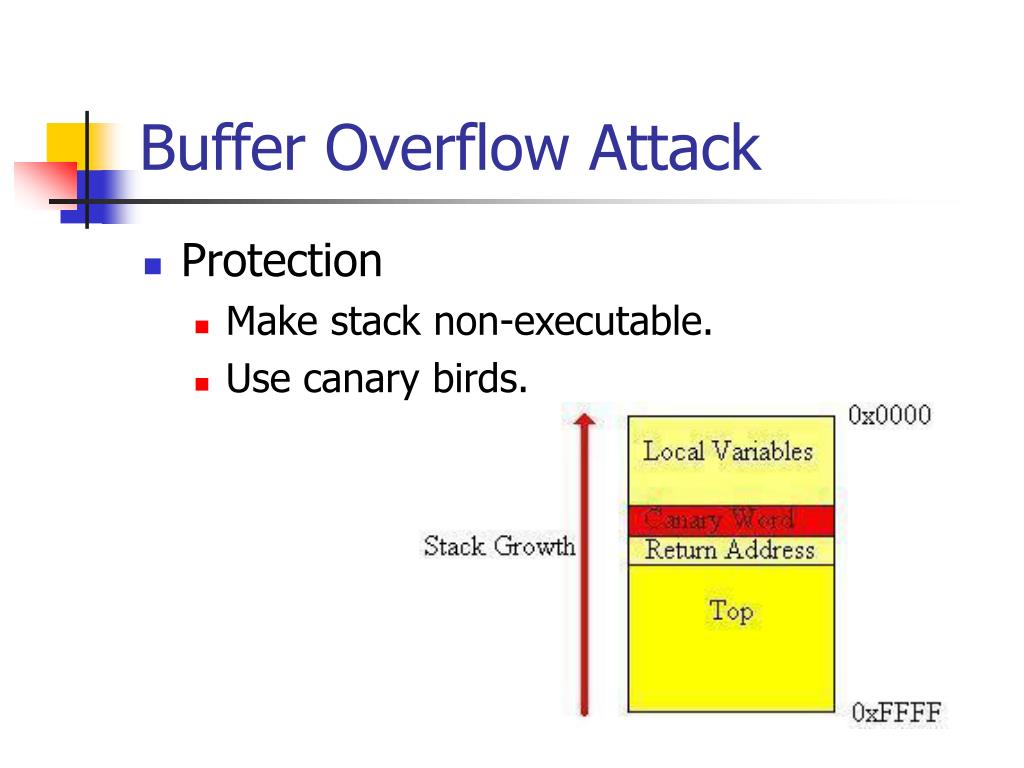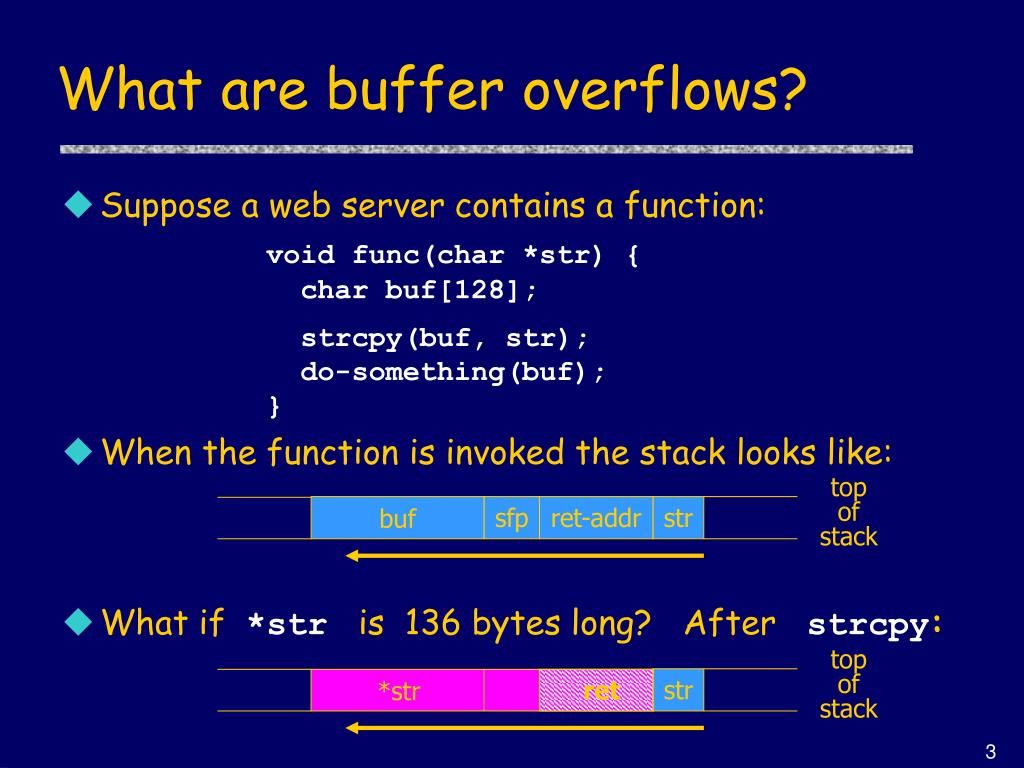
- BUFFER OVERFLOW ATTACK SOFTWARE
- BUFFER OVERFLOW ATTACK CODE
So now we gonna try it.įirst let’s open the address randomization: 1 This number is not high and can be exhausted easily with brute-force approach. On 32-bit Linux machines, stacks only have 19 bits of entropy, which means that the stack base address can have 2^19 = 524,288 possibilities.
BUFFER OVERFLOW ATTACK CODE
Use the above shell code in exploit.c and try the attack from Task 2 again, see the difference:įrom the result we can see the user has been changed from SEED to ROOT. Using this shell code, we can attack on the vulnerable program when /bin/bash is linked to /bin/dash. (2) set eax to 0xd5 ( 0xd5 is setuid()‘s call number). The updated shell code adds 4 instructions: - The code below is the same as the one in Task 2 - "\x31\xc0" we need change the shell code in exploit.c into following code: 1 We can find that with setuid(0) not commented, the identity changed from SEED to ROOT.įor further thinking, we will inject new shell code(similar to task 2) into stack and invoking dash as root. We need to compile it twice, one with setuid(0) commented and one with not commented. $ gcc dash_shell_test.c -o dash_shell_test The above program can be compiled and set up using the following commands.

So we get the address of str_start : 0xbfffeb30 īefore calling the bof(), the program push the only parameter into stack(the str start address) and then push return address into stack then coming into the bof function push old ebp into stack ebp -> new ebp esp -= 0x28 so the stack will looks like: 1 To complete the program, we need to use gdb to analyze the stack of the stack program. What we need do is complete the exploit.c file and let it generate ‘correct’(i mean real bad) file so that we can trig the bomb. And this exploit.c program will do some interesting things in badfile to make it a read ‘bad file’. It’s easy to understand what the program do: generate a badfile for stack program we have compiled before to use as its input file. *Save the contents to the file "badfile"*/ *You need to fill the buffer with appropriate contents here*/

*Initialize buffer with 0x90 (NOP instruction)*/ *A program that creates a file containing code for launching shell*/ To inject the dirty code, we are offered a program again: 1
modify the value in the position so that the next instruction it supposed to execute will be leading to our injected dirty code. find the position in which the return address is stored. So now we have a bomb, next we need to inject our dirty code into the bomb so that it will be triggered automatically. $ gcc -o stack -z execstack -fno-stack-protector stack.c You can finish your work by commands below: 1 compile it with -fno-stack-protector and -z execstack to turn off the StackGuard and the non-executable stack protections. See this program, it does own potential risk of buffer overflow, but to exploit this vulnerability, we need to do some work first: *The following statement has a buffer overflow problem*/ So we need a program that holds such vulnerability: 1 It can lead a buffer overflow vulnerability. In this task, we will exploit the vulnerability of strcpy(dest, src), it has a drawback as we introduced in 5, Preparation Part. Then you can run call_shellcode to learn about this. Gcc -z execstack -o call_shellcode call_shellcode.c "\圆8" "/bin" /*Line 4: pushl $0圆e69622f*/īefore compiling the program, you should do what have been showed in 6.1 and 6.4 above.Ĭompile the code using following command: 1 *A program that launches a shell using shellcode*/ *You can get this program from the lab’s website*/ For convenience, we have been offered the assembly version of code above. Our target is inject this shell code into the stack, and let the program run these part of code. Two different programs can have the same VA, but not the same PA, unless they can share memory. Every program has its own virtual address. pointers will be allocated in the stack, but where it points at will be allocated on the heap. Local variable will be allocated on the stack. OS will zero out everything in BSS Segment, that’s why all uninitialized variable will be set into zero. BSS Segment, all value will be set Zero. Global and static variable are stored in Data Segment or BSS Segment, if the value is initialized, it will be put into Data Segment, otherwise it will be put into BSS Segment. Reference Preparation: Some Useful Knowledge. Task 6: Turn on the Non-executable Stack Protection. Task 5: Turn on the Stack Guard Protection. Task 4: Defeating Address Randomization. Task 3: Defeating dash’s Countermeasure. 6.4 Configuring/bin/sh(Ubuntu 16.04 VM only). Buffer overflow vulnerability and attack. BUFFER OVERFLOW ATTACK SOFTWARE
This is a report about SEED Software Security lab, Buffer Overflow Vulnerability Lab.






 0 kommentar(er)
0 kommentar(er)
